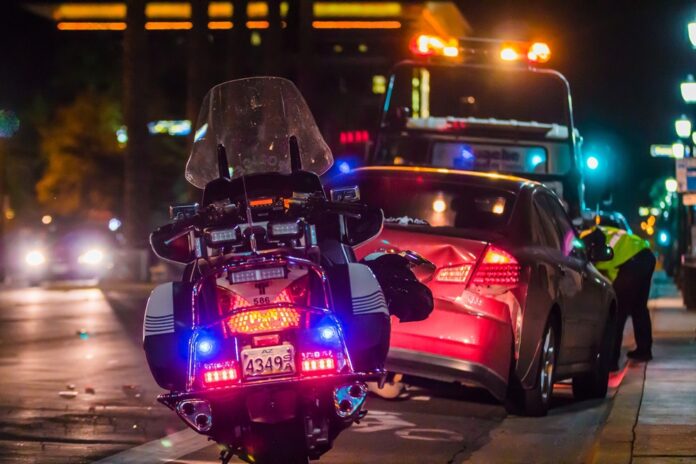There’s something liberating about riding a motorcycle. You have the wind in your face and the road literally beneath your feet. However, even when you obey every safety law and regulation out there, motorcycle accidents will unfortunately still occur.
So, how do you actually protect yourself and avoid a motorcycle accident? We’ll take a look at some of the common types of motorcycle accidents and the steps you can take to mitigate your risks.
Common Types of Motorcycle Accidents
To help keep you safe and aware, here are some of the most common types of motorcycle accidents and how you can stay safe from them on the road:
Left-Turning Vehicles
Motorcycle accidents involving left-turning vehicles are the most common, and the National Highway Traffic Safety Administration (NHTSA) states this type of accident currently accounts for 42% of the nation’s fatal motorcycle crashes.
This type of accident occurs when a vehicle makes a left turn and ends up striking the motorcycle. Intersections are the most common place left turn accidents occur, but they can also happen when a motorcycle is passing another vehicle.
Trying to anticipate the other driver’s next move can help prevent this type of accident. This means looking both ways before crossing an intersection, even when you have a green light. Watching for a vehicle’s turn signal and always leaving a gap between your motorcycle and other vehicles.

Switching Lanes
Accidents can occur when a vehicle switches lanes beside you, and the primary cause of this type of accident is the driver not seeing you before switching lanes. Remember, drivers have blind spots, meaning there are times when you’re not easily visible to other vehicles on the road.
While it’s not always possible to know when you’re in a driver’s blind spot, you can take some steps to prevent an accident. Also, try to avoid riding next to a vehicle or at least try to stay even with the driver-side window whenever possible.
You may also be able to spot when a vehicle is getting ready to change lanes. Most drivers use their turn signals and start checking their mirrors before switching to another lane. If you see a driver turning their head to check all of their mirrors, it’s a good indication they are getting ready to move over into your lane.
Head-On Collisions
Head-on collisions involving motorcycles are frightening for everyone involved. This type of accident also accounts for an estimated 37% of motorcycle accident-related fatalities.
Motorcycle riders are often thrown from their bikes or crushed by the oncoming vehicle. Unfortunately, since this type of accident typically occurs when both involved parties are traveling at a high rate of speed, injuries tend to be more severe.
The National Safety Council (NSC) recommends that all motorcycle riders follow the four Rs to avoid a head-on collision, which includes:
- Reading (paying attention) to the road ahead
- Always staying to the right of traffic
- Reducing your speed when coming up into traffic
- Riding on the side of the road when necessary
While these tips cannot prevent all head-on collisions, they can help you stay safer on the road.
Intoxication Related Accidents
Hopefully, you never get on your motorcycle when you’re intoxicated. Not only is it illegal, but you’re also significantly increasing your chances of getting into a serious accident, endangering your own life and the lives of others on the road. Unfortunately, you can’t prevent other drivers from staying away from the vehicles after a few drinks—however, you can take some key precautions to stay safe while riding.
Pay attention to other driver’s behavior. For example, if a car is weaving in and out of lanes, you want to avoid being behind or beside the vehicle. If you believe another driver is intoxicated, pull over and alert the authorities, as not only are other drivers at risk, but so is the intoxicated individual.
Corner-Turning Accidents
Even experienced riders can get into an accident turning a corner, and this type of motorcycle accident often happens when you take a corner at a high rate of speed. This maneuver may look cool in the movies, but it’s risky behavior to try to pull off in real life, especially when you lack experience.
Not only can you lose control of the bike on the turn, but you may not be able to avoid any obstacles in the road. Taking corners at a slower speed ensures you have control over the motorcycle. This also gives you time to avoid any obstacles you may not see until you turn the corner.
What To Do After a Motorcycle Accident
If you’re involved in a motorcycle accident, the first thing you need to do is to seek out medical attention. Even wearing a helmet and other gear won’t always protect you from injuries.
After you’ve ensured that you’re physically stable, the next step is to contact an attorney to find out about your legal rights. They can help keep you legally protected in the event of an accident while also potentially fighting for the compensation you need if applicable.


